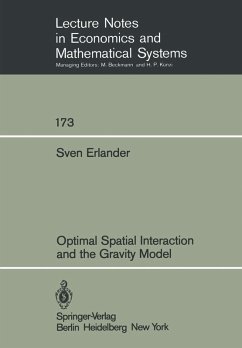This book has grown out of a desire to explore the possibilities of using optimizing models in transportation planning. This approach has been followed throughout. Models which combine descriptive and optimizing elements are not treated. The gravity model is here studied as the solution to an optimizing model. In spite of this approach, much of the material shoula be of general interest. Algorithms are not discussed. The author has benefited from discussions with many colleagues. M. Florian suggested the term "interacti vi ty". N. F. Stewart and P. Smeds gave many valu able comments on a first draft. M. Beckmann made me think once more about the final chapters. R. Grubbstrem and K. Jornsten helped clarifYing some things in the same chapters. Remaining insufficiencies are due to the author. Gun Mannervik typed with great patience. Linkoping in October 1979 Sven Erlander ABSTRACT The book proposes extended use of optimizing models in transportation plann ing. An entropy constrained linear program for the trip distribution problem is formulated and shown to have the ordinarJ doubly constrained gravity model as its solution. Entropy is here used as a measure of interactivity, which is constrained to be at a prescribed level. In this way the variation present in the reference trip matrix is preserved. (The properties of entropy as a dispersion measure are shortly discussed. ) The detailed mathematics of the optimal solutions as well as of sensitivity and duality are given.
Dieser Download kann aus rechtlichen Gründen nur mit Rechnungsadresse in A, B, BG, CY, CZ, D, DK, EW, E, FIN, F, GR, HR, H, IRL, I, LT, L, LR, M, NL, PL, P, R, S, SLO, SK ausgeliefert werden.









